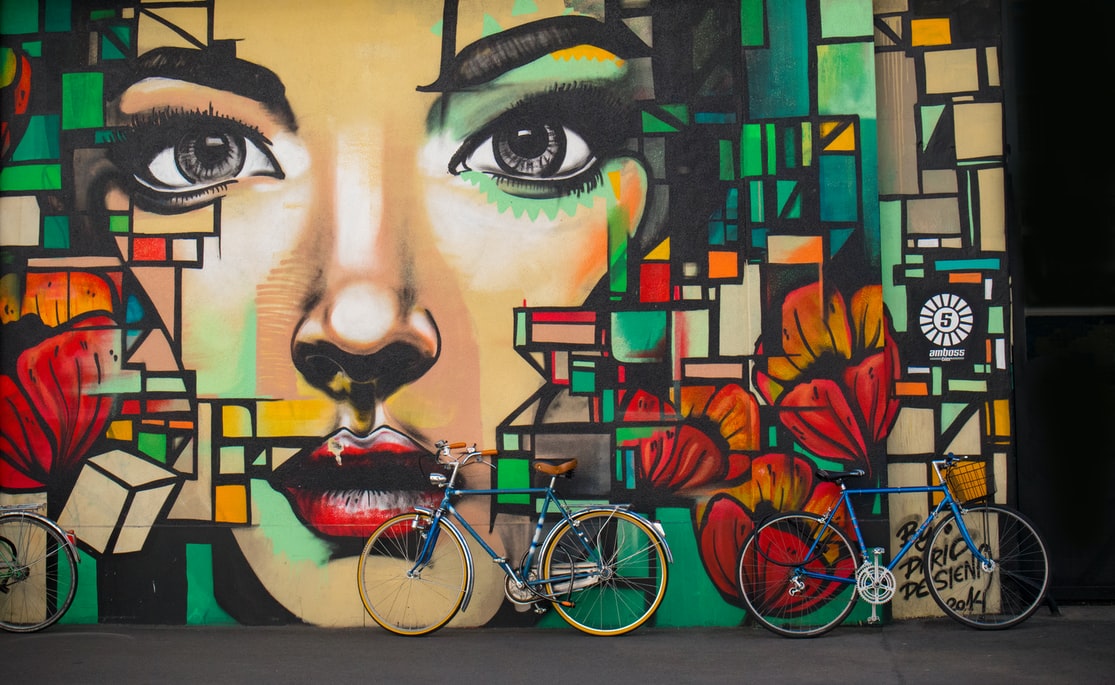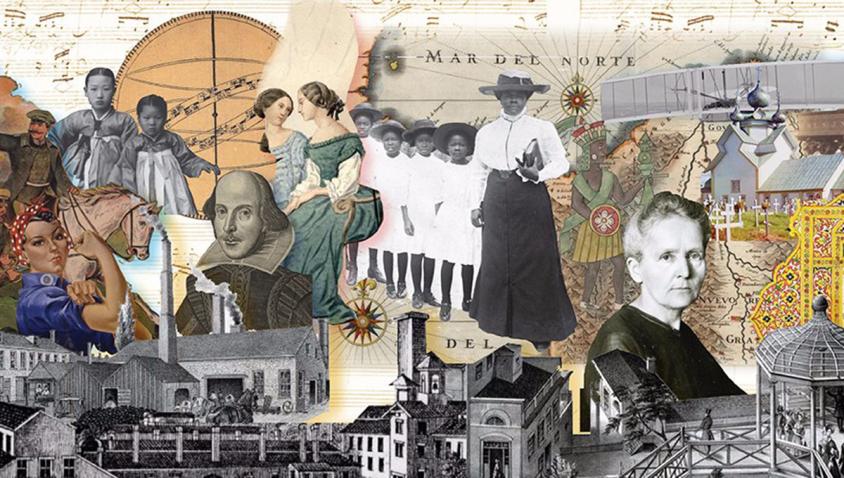Countries from all over the world are far from free from the worst impacts of the pandemic. That is why during this unprecedented time, artists and their art craft have played a meaningful though intangible role in fighting the spread of the virus.
Artists, since the virus appeared, have urged us to wash our hands, wear masks, encouraged us to stay at home to protect ourselves and our family. Along with closing schools, shutting borders, testing, quarantining, and contact tracing, art has mobilized communities in the global fight against COVID-19. But what exactly is the role of art during the pandemic? And how has its advocacy mobilized the community? It’s time for us to find out the answer to these questions, by exploring the presence of art within the pandemic period and investigating deeper how the performing art industry has affected us and what it means in terms of mobilizing the public to keep countries around the world safe from COVID-19.
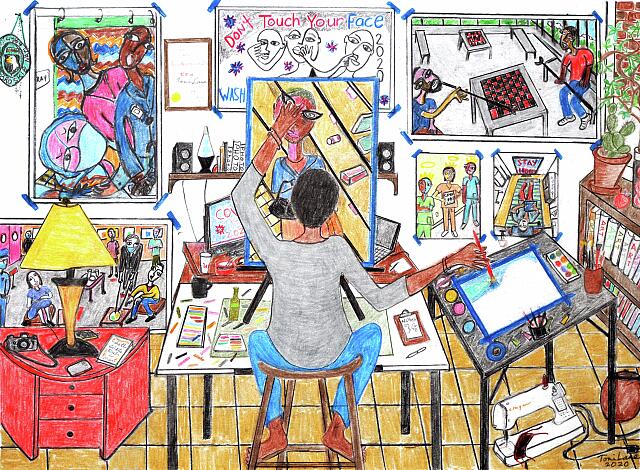
Artists can share and amplify crucial information among fans and followers, reaching an immense audience by using their talent and diverse forms of cultural expressions to engage with people in response to the crisis.
The United Nations Department of Global Communications (DGC)
Music Is Universal, And So Is Our Desire For Interpersonal Synchrony
In 800 BCE, the first recovered piece of recorded music was found. It was written in cuneiform and was a religious hymn. Ever since then, music has become an important part of our daily life: it lifts our mood, excites, calms, and relaxes us during these challenging times. People all across the world celebrate music through their windows, balconies, and even in their cramped rooms with cheerful joy and endless exuberant laughter. Even with the looming threat of the presence of COVID-19 in mind, music has our backs with its idiosyncratic, confrontational lyrics and different facets of emotional expressions. And for the musician, they still keep on tugging on our heartstrings with excellent music that defies genres, merges past influences, and exceeds expectations.
On March 13, 2020, people from all over Italy came together, stood in front of their balconies, and started singing the national anthem to raise morale for their fellow citizens. With the music as faultless as one can imagine, the mesmerizing melody had exemplified the artistry laid within its culture and people. Policemen in Spain playing guitar while on patrol and New York City apartment dwellers singing along to The Beatles “Yellow Submarine” from their windows, all of which indicate the universal response of our time when it comes to music. Whether it is through clapping or moving along, music is meant to capture our attention, sometimes even driving us to move without us being aware of it.
The interpersonal synchrony that we achieve through making music links our minds and bodies, enhances social cohesion along with other positive outcomes, including improvements in mood and self-esteem. Music, with all of its effectiveness, has become a wonderful instrument in conducting and harmonizing the concert of life. Each creates a fragment of otherworldly rendition that can be both refreshing and layered. In a tumultuous time like 2021, music-making has sure brought us together, told vital stories that inspire us to reflect, and ultimately, renewed us with hope and solidarity.
When music is needed, it’s there and it serves a purpose.
Composer Jóhann Jóhannsson
Art Is Like A Flower, There Is No Question Of Growing Or Not Growing.
Visual arts serve as key tools to raise awareness, provide needed respite, and bolster spirits amid the pandemic. The oldest secure human art that has been found dates to the Late Stone Age during the Upper Paleolithic, possibly from around 70,000 BC, but with certainty from around 40,000 BC, when the first creative works were made from shell, stone, and paint by Homo sapiens, using symbolic thought. While artists’ art is drawn from personal experience and observation, they also open our eyes to the diverse effects of the pandemic and give voice to what many people may be feeling and experiencing, while engaging the public in the global fight against COVID-19.
One particular style of art that specifically stands out during the outbreak of COVID-19, is propaganda art. Propaganda art was adopted owing to its retro aesthetic style that connects with the youth, its highly saturated hues, and its emotional resonance with older generations – thus, conveying clear messages on how to keep oneself and others safe from the virus. Artists have also created posters to thank doctors, soldiers, and nurses for their bravery. In Vietnam, there has been an outpouring of art in cooperation with the health ministry to keep the country protected from the virus.
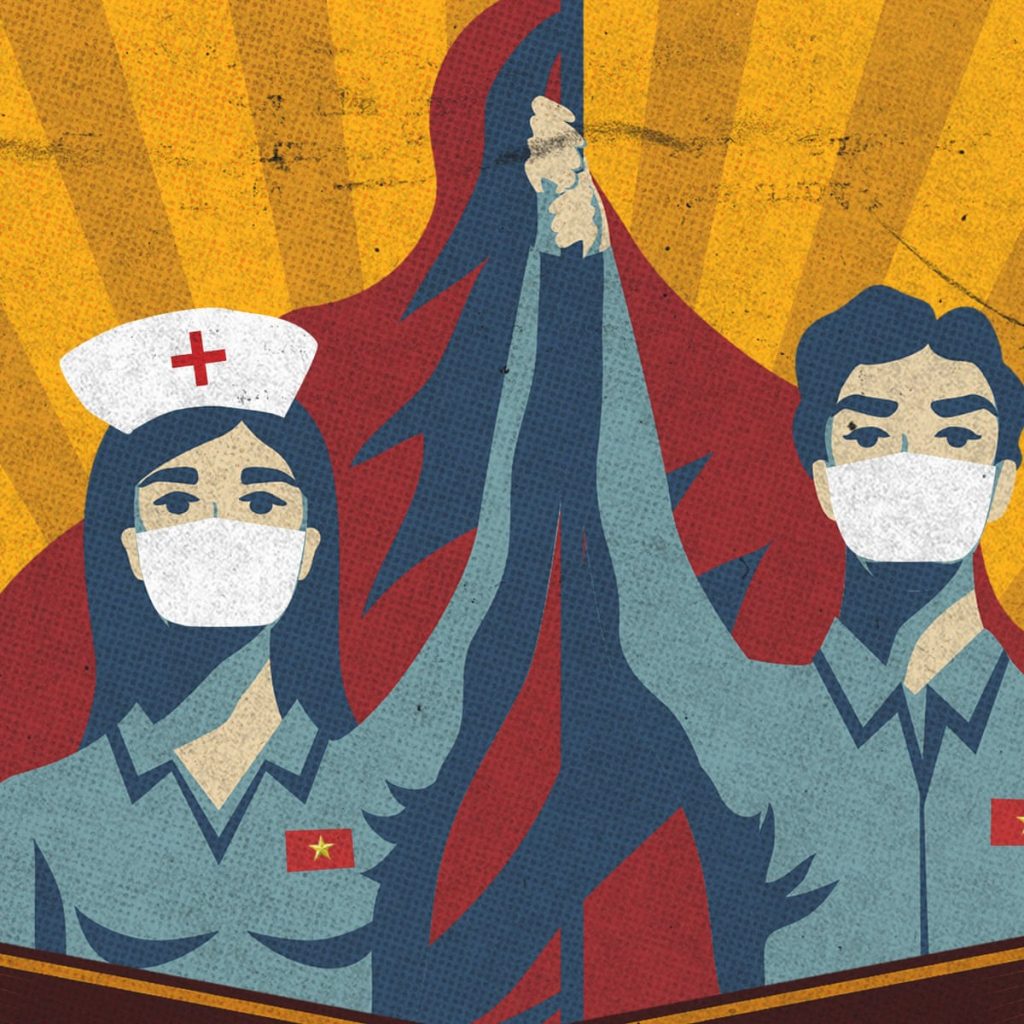
Such messaging, along with early action and contact tracing helped the nation avoid the levels of suffering seen in Europe and keep cases to mere hundreds. As of 8 April 2021, the Ministry of Health has officially reported 2,668 confirmed cases, 2,429 recoveries, and 35 deaths since the outbreak of the pandemic. Artists in Vietnam, like Kim Lien, are resolute in their response: “In Vietnam, the government says we are at war with the virus,” she says, “So, as artists, we do our job in a war: we draw.” The variety and compelling individuality of Vietnamese propaganda art, and the circumstances under which it was created, define and distinguish it from almost all other art of its kind, thus easing pandemic-related anxieties, sending clear messages of solidarity, resistance, and defiance.
When creative minds are behind locked doors, our souls expand to express more through art.
Shobha Iyer
Writing Reveals Terrifying Pain, But It Is The Pain Of Human Love
“In good times arts are magical, and in tough times they are essential. That’s when you need them the most. Art makes you human.”, the quote from Wisconsin poet laureate Bruce Dethlefsen, regardless of a different context, seems too apt for the moment. On some mornings, it feels like the walls are closing in, and in some ways, they are. Reading opens a metaphorical window. As the world struggles to adapt to the new normal fuelled with quarantines, social distancing, uncertainty, dread, and dismay, people have found different ways to cope. One of them is writing: a piece of long-form journalism, webcomics, zines, or graphic novels, all of which provide a better opportunity to find solace and positivity during these unprecedented times.
The feeling of homesickness is more common than ever before: the desire to run home, the general feeling of displacement, all of which have inspired writers from all over the world to create a comforting multi-universe, as they grapple with the ways languages, meanings, thoughts, and emotions collide in themselves and the art form. People who live away from home, with more time than ever before to mourn for the “world that was”, and to watch it drift further into the shadows. Luckily for some, the result doesn’t have to be that upsetting.
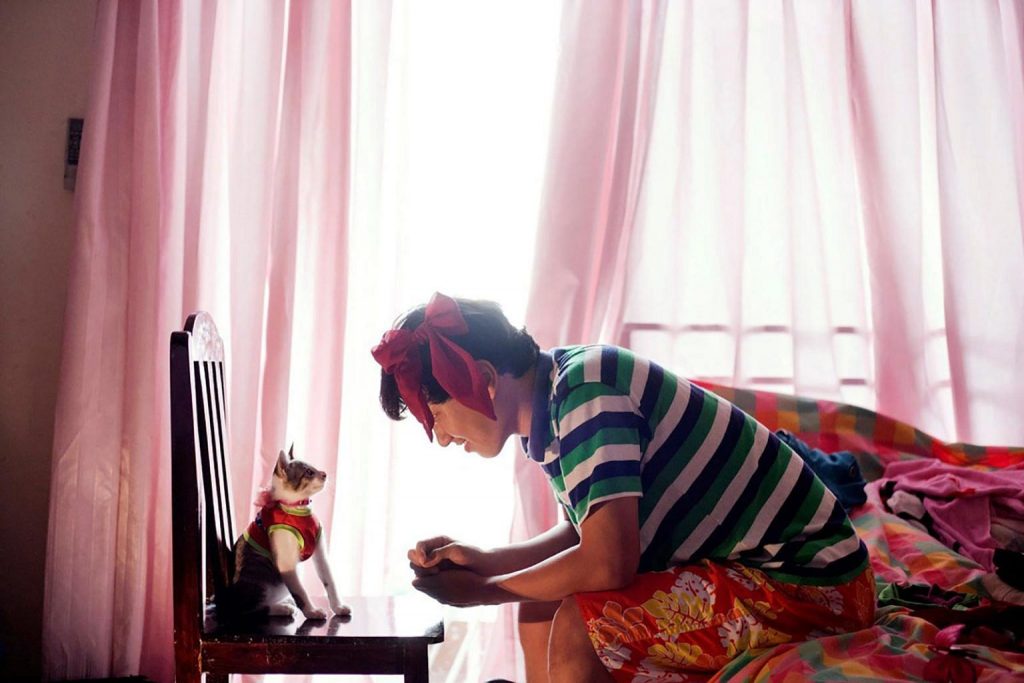
One of the benefits of the enforced social distancing is the opportunity to have heart-to-hearts with our pets. Maika Elan created the series “Ain’t Talking Just Lovin” to portray single people who choose to live with their pets instead of their family or partners. Whether that means telling your cat your views on transcendentalism, finally opening up to your parakeet about your childhood or simply narrating your frequent trips to and from the fridge with your dog, our non-human companions have been great sources of comfort. For some people, living alone with pets isn’t a new development, but a preferred way of life. Literature helps us to look at, as Hamlet said, before and after, not just focusing on the bright future ahead, but also, within ourselves and our process of growth after years of nonstop fighting.
You may not control all the events that happen to you, but you can decide not to be reduced by them.
Maya Angelou
Whatever We Do, Art Has Our Backs
In a time of world upheaval, lack of leadership, grieving, and death, artists and their artwork are here to stay. The pandemic, despite the turbulences caused, has created some of the most interesting and well-defined pieces of art of all time, and that is something worth grateful for. As we gather around to celebrate World Art Day, let us not forget the voices of all the artists whose work stand the test of time whether it is in fiction, poetry, non-fiction, photography, visual art, or filmmaking. The ideas and encounters of COVID-19 would not have been brought to the public without the help of writers, poets, artists, actors, filmmakers, scholars, and other cultural producers from all around the world. Therefore, to celebrate this momentous day, IVolunteer International sends its warmest and most loving hugs to all artists, no matter where and no matter whom, as a token of gratitude for making the pandemic less painful than it would have been otherwise – thank you all.
References
ABC News. 2020. New Yorkers Sing Together Out Windows during Coronavirus pandemic.
Barbara Orbach Natanson. Katherine Blood, Curator of Fine Prints, Prints & Photographs Division. (2020). COVID-19 Artworks: Toni Lane’s Pandemic Drawings.
Benjamin Hollis. The Method Behind The Music. 2017. History of Music: Pre-Renaissance Music: The Evolution of Instruments and Theory.
CBS News. 2020. Quarantined Italians sing together from balconies.
Chris Humphrey. The Guardian. 2020. ‘In a war, we draw’: Vietnam’s artists join fight against Covid-19.
Guardian News. 2020. Spanish police sing to families during coronavirus lockdown in Mallorca.
Gunter Kreutz, Stephan Bongard, Sonja Rohrmann, Volker Hodapp & Dorothee Grebe. Springer Link. 2004. Effects of Choir Singing or Listening on Secretory Immunoglobulin A, Cortisol, and Emotional State.
Joanne Lumsden, Lynden K. Miles, and C. Neil Macrae. Frontiers. 2014. Sync or sink? Interpersonal synchrony impacts self-esteem.
Mari Riess Jones, Heather Moynihan, Noah MacKenzie, Jennifer Puente. Psychological Science. 2002. Temporal Aspects of Stimulus-Driven Attending in Dynamic Arrays.
Maika Elan Photographer. 2020. Aint’ Talkin’ Just Lovin’.
Wikipedia. Last edited in 2021. History of art.
IVolunteer International is a 501(c)3 tech-nonprofit registered in the United States with operations worldwide. Using a location-based mobile application, we mobilize volunteers to take action in their local communities. Our vision is creating 7-billion volunteers. We are an internationally recognized nonprofit organization and is also a Civil Society Associated with the United Nations Department of Global Communications. Visit our profiles on Guidestar, Greatnonprofits, and FastForward.
